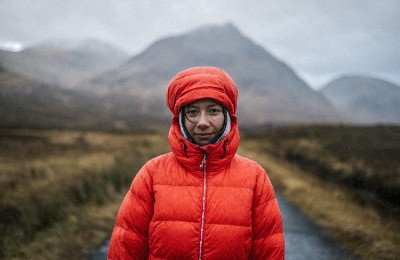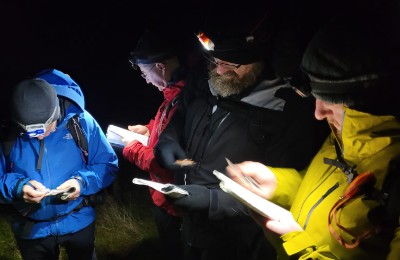Sunday 10th November 2024, 10:00am

You’ve been exploring the mountains for a few seasons now, and it’s all been going great. Although…there was that one time when you and your pal had a bit of an adventure and didn’t get back till late! But what if something was to happen that’s more than just a minor delay?
Someone slips and hurts their leg...
Your friend twists their ankle and can’t walk any further...
You can't get yourself off the hill...
What should you do?
And what kit should you have to help deal with the situation?
Read on to discover our top tips for things to carry in your rucksack in case of emergencies.

A first aid kit is one of the most basic essentials to add to your rucksack. Make sure you always pack one when you're heading to the hills, and don't forget to check it regularly and top up any supplies (like plasters, bandages, painkillers etc.) you may have used the last time you were out.
First aid is about trying to stop whatever injury has occurred from getting worse (rather than fixing it completely) so the key here is just to do as much as you can with what you've got.
Clean any wounds and patch them up as best as you can. Support any breakages by padding with a fleece or similar spare item of clothing and strap to the body, or the other ankle if the other one is fine. This will stop movement and help to reduce pain. Painkillers, such as paracetamol, can also be taken to reduce pain until further help is reached/arrives.
If you need a new first aid kit, or to update an old one, don't forget you can use your Mountaineering Scotland member discount to get 20% off at Lifesystems. They sell a range of sizes of first aid kits, allowing you to find one that will fit both your pack and different needs.

When you set off, it was a beautiful autumn morning – crisp, clear and blue-skies as far as the eye can see. But, as the day goes on, the weather starts to turn...
To make matters worse, one of your group has had an accident that’s going to prevent them walking off the hill unaided. And it’s going to be a long wait until help arrives...
Luckily, you’ve packed enough spare clothing to keep you warm as you await help.
Make sure you put all your extra kit on – that extra mid-layer, your warm jacket, waterproofs, hat and gloves. Get everyone else in your party to do the same.
Even on a relatively warm day, your body will start to get cold when sitting down, not moving. Don’t risk hypothermia in the hills to save room in your rucksack - you'll be grateful for the extra layers if the worst should happen.
Find out what kit Mountaineering Scotland recommends packing for each season on our Essential Kit page, with a downloadable kit-list and upgrading to winter kit.

Survival bag, bothy bag, emergency bivvy, bivi bag, group shelter…there are lots of different options for compact, lightweight shelters which can be packed away at the bottom of your rucksack. And these can be a real lifesaver should things go wrong in the hills.
Some group shelters are big enough to allow the user to create a ‘microclimate’ to stay warm and dry, while others are simple, single polythene bags designed to protect from the worst of the elements should you find yourself injured or unable to get off the hill.
If one of your party is injured, getting them into a bothy bag or shelter quickly will insulate them from the weather and help to slow the loss of heat. In some cases, when injury prevents it or moving is too painful, cutting down the side of a survival bag and wrapping the injured party in it might be a better option. You can use tape from your first aid kit to seal it once they’re covered. You can also get them to sit on the bag to insulate them from the cold ground.
Survival bags start at as little as £5 (and you can use your Mountaineering Scotland discount to get 20% off) – making this a cheap, essential bit of kit for autumn adventures.

Two essential bits of kit all year round, but even more important as we move through autumn and the days get shorter, don’t forget to pack both your head torch…and a whistle.
Making sure you have headtorch, a spare and spare batteries in your kit will make all the difference should you end up spending longer than planned on the hill and coming down in the dark.
And, if something should go wrong, you can attract attention by blowing on your whistle. The international signal for help is six short blasts. Do this, wait a minute, and then repeat.
If it’s dark, you can also flash your light down towards where you think the rescuers might be coming from. Remember, you should NEVER shine your torch towards a helicopter at night, as this might ruin their night vision and effect their flight capability.
If you want to improve your navigation skills as days on the hill get shorter, our Night Navigation courses are running again this year in October and November, and are open for booking now.

You might have noticed that a mobile phone hasn’t been mentioned yet, and that’s because most people presume everyone will have a phone on them at all times, no matter where they go. But it’s worth remembering that technology isn’t a failsafe, and having a phone to call for help won’t be much use if you’ve no battery, which is why we put together our #SmartNav guidance (read more here).
Remember to:
If you do need to call for help, remember: